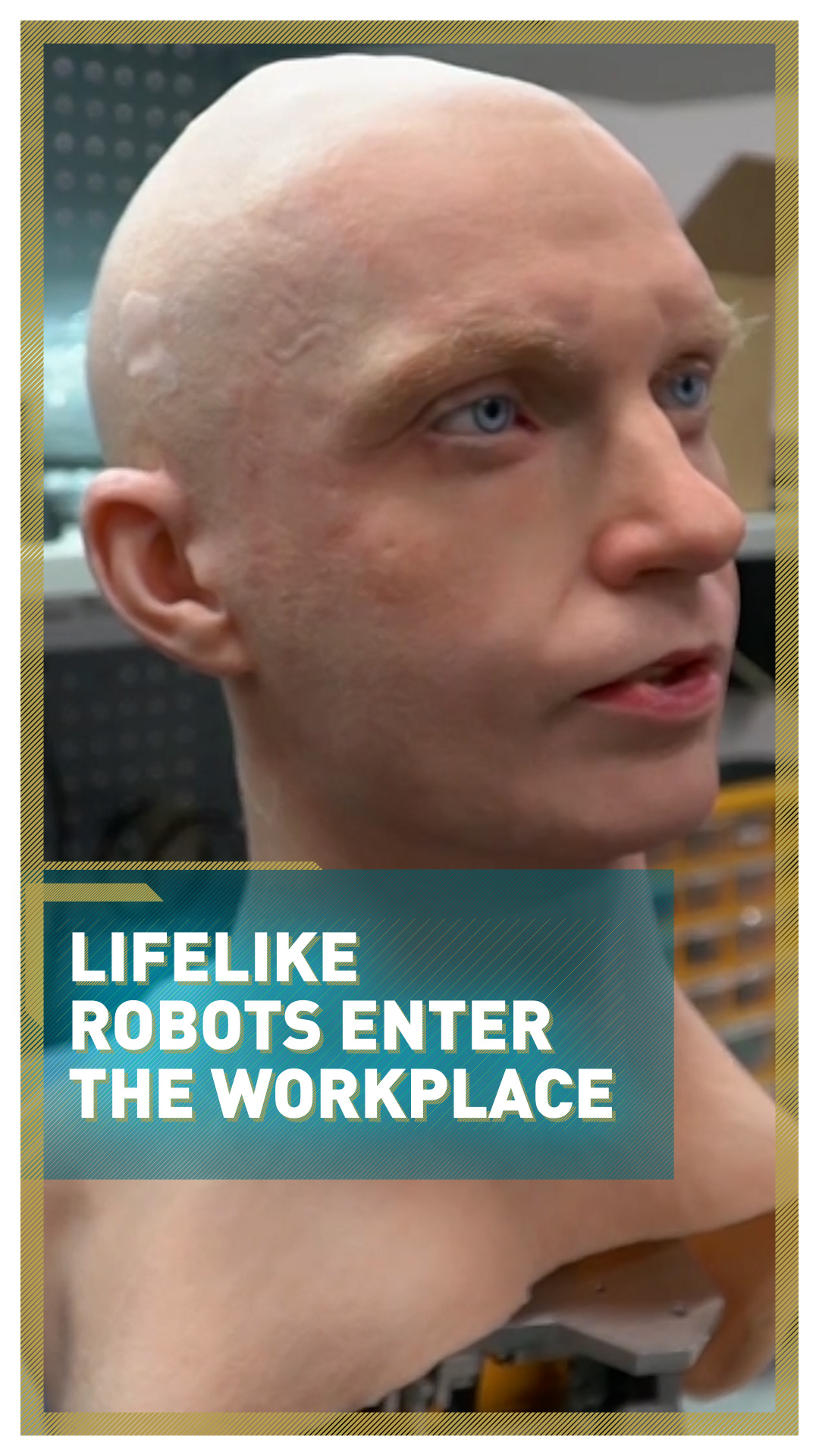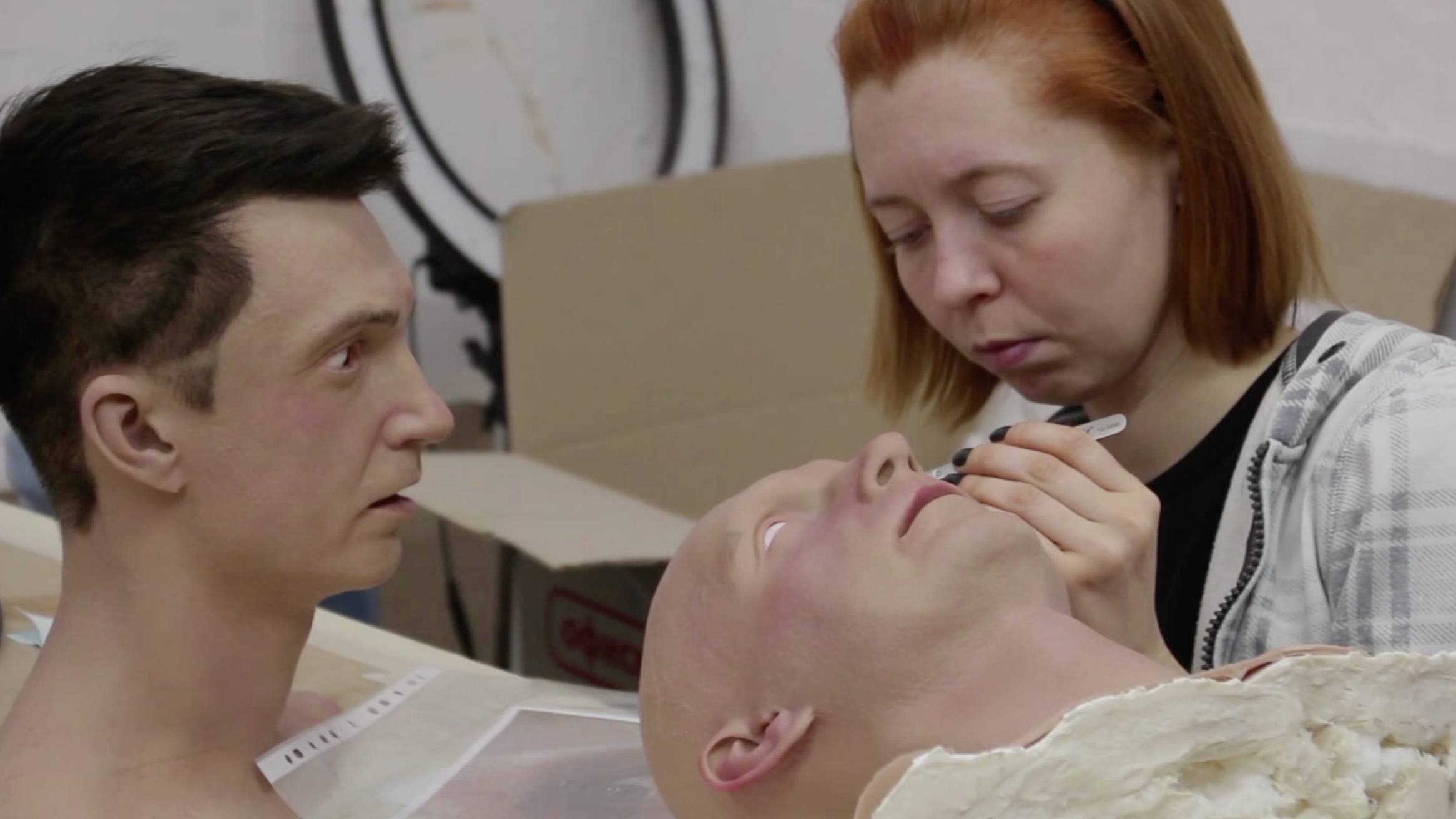02:15

Russian company Promobot, has been experimenting with 3D printing and polymers to make lifelike skin and hair for its range of androids with some incredible results.
The humanoid robot's head, eyes, and lips move, while its "skin" copies all the tiny details of a human's, down to the texture, fine lines and wrinkles.
"We have sold about 10 such robots around the world and they perform different functions everywhere," said Igor Eremeev, technical director of Promobot.
"In some places, they act for promotion purposes, in some places, they act as consultants, for example, in multi-functional centers," he explained.
READ MORE:
Rare earth metals explained
The long road to restoring Notre-Dame
Thunberg threatens to boycott COP26
One such robot has been "working" at a business center in the city of Perm in Russia since last summer.
It receives customers on its own, alongside human co-workers. Using voice commands, it provides simple services such as helping clients scan passports, fill in application forms and print documents.
"Our reaction was surprise. It looks so much like a human being, and our clients who come to us, they look and do not always recognize that it is a robot," said Yulia Matveeva, and administrator and the robot's co-worker.
The similarity to humans disappears as soon as you look at its rear. Its built-in computer is integrated with equipment on the desk.
"It looks unusual, she blinks so that it is a bit scary but generally it is cool," said client Arseniya Denisova.

The humanoid robot is so lifelike that some people have mistaken it for a human. /Screengrab/AP
The humanoid robot is so lifelike that some people have mistaken it for a human. /Screengrab/AP
According to the center's data, the robot saves about 43 minutes per day for each administrator, as it takes the most simple, routine tasks, leaving the more complicated ones to humans.
"The robot does not need a lunch break, does not need a vacation, it always smiles, knows everything about all products," co-founder and development director Oleg Kivokurtsev told AP.
"If there are any new services, or new goods, you just need to upload them into the robot, it will take five seconds, while an ordinary person will take a long time to learn."
However, the creation of each humanoid robot is still an individual process, the result of many months of painstaking labor. It takes at least three months for workers at Promobot's office in Perm to create a new appearance for an android.
Its skin has to be colored, its eyeballs, hand-painted and its eyebrows are inserted one hair at a time.
Facial expressions are another difficulty, explained technical director Igor Eremeev.
"There are people who, after the robot is assembled, they sit down and begin to program it – its smile, they move the sliders, blinking, eye movements, mouth opening," he said.

It can take up to three months to make each individual humanoid with all its different facial features and characteristics. /screengrab/AP
It can take up to three months to make each individual humanoid with all its different facial features and characteristics. /screengrab/AP
Promobot has been manufacturing robots since 2015.
In 2019, it started making android robots aimed at organizations that service people – museums, education, shopping malls, and government organizations.
Data show not everybody is positive about humanoid robots but the manufacturer is confident demand for robotics – androids specifically – will grow in the near future.
"When the first film canvas was invented, it was shot through with a pistol, and now it's the same, we are creating a new technology that will become commonplace literally in five years," says Kivokurtsev.
The cost of a Promobot android varies from 1.2 to 3 million roubles ($16,000 – $42,000), depending on its configuration. The company has further plans to build walking robots.
Video editor: Pedro Duarte
Source(s): AP

